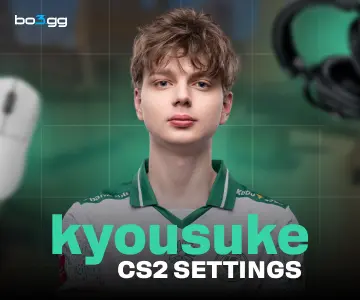
In CS2, understanding callouts is crucial for good team communication, especially on a map like Vertigo, which has multiple levels and tight spaces. Callouts are specific names for areas on a map that players use to quickly communicate enemy positions, movements, or strategies. Using accurate callouts can improve your team's coordination and increase your chances of winning.
In this guide, we'll explore all the key Vertigo CS2 callouts, breaking down the map into major areas to help you master the layout. Whether you're a beginner or an experienced player looking to sharpen your skills, knowing these callouts is a must.
Dividing Vertigo Map into Key Zones
Key Zone | Description |
T-Spawn | Starting point for terrorists, where the initial attack strategy is planned. |
A Site | High-stakes bomb plant area with several critical positions like Ramp, Sandbags, and Heaven. |
B Site | Tight bomb plant site featuring key positions like Stairs, Back Site, and Pillar. |
Mid | Central area for controlling rotations and applying pressure to A and B Sites. |

T-Spawn: This is where the terrorist side begins. T-Spawn is the place to plan your attack strategy. From here, terrorists usually decide whether to push A Site, B Site, or try to take control of Mid. Proper coordination at T-Spawn sets the tone for the round, allowing teammates to discuss their roles.
A Site: A Site is a high-stakes area on Vertigo, frequently targeted for bomb plants. Key Vertigo A Site callouts include:
- Ramp: The main entry point for terrorists, which is often highly contested. Controlling the ramp is crucial to push forward.
- Sandbags: Located along Ramp, this spot is great for defenders to catch enemies off guard but can easily be cleared with utility like molotovs or grenades.
- Default Plant: The standard bomb plant spot at A Site, offering good cover. Proper post-plant positioning is essential to defend this location.
- Generator: This spot near Default provides cover and is often used by defenders to peak at attackers approaching A Site.
- Heaven: This elevated position overlooks A Site and gives defenders a great angle. Controlling Heaven is key to keeping A safe.
B Site: B Site is another bomb plant location but has a tighter layout, making it a bit trickier to control. Key Vertigo B Site callouts include:
- Stairs: A major entry point for terrorists heading to B Site. Clearing Stairs properly can make or break a push.
- Back Site: This deep area in B is perfect for defenders to delay attackers, using cover to peek at enemies entering.
- Pillar: Located in the center of B Site, the Pillar provides essential cover for both attackers and defenders, making it a focal point of the action.
- Catwalk: This is a path that leads from Mid to B Site, allowing quick rotations and flanks. Controlling Catwalk is vital for managing B Site attacks.

Mid: Mid control is crucial for map dominance, as it allows players to pressure both A and B Sites. Key Vertigo Mid callouts include:
- Ladder Room: This area connects Mid, B Site, and Construction. It serves as a key rotation point, allowing both quick access and strategic flanking opportunities.
- Window: This is a common spot to peek into Mid, helping defenders or attackers keep an eye on enemy rotations.
- Construction: This part of Mid provides access to different points on the map. Using utility effectively in Construction can prevent enemy movement and help your team take control.
Key Callout | Description |
Ramp | Main entry point for terrorists to A Site. Critical for gaining site control. |
Sandbags | Defensive position along Ramp, often cleared with utility. |
Stairs | Entryway to B Site for terrorists, essential to clear for successful pushes. |
Ladder Room | Connects Mid to B and Construction, important for rotations and flanking. |

Practical Use of Callouts in Gameplay
Using callouts effectively can make or break a round. Here are some examples of how to use Vertigo map callouts in real gameplay:
- A Site Take: If your team is pushing A Site, clear communication is key. For example, calling "one at Sandbags" lets your teammates know they need to focus on clearing that specific spot, possibly with grenades.
- B Site Defense: If you are defending B and spot enemies coming up Stairs, call it out immediately. Letting your team know, "two at Stairs, pushing Back Site," helps everyone set up a proper defense.
Clear and consistent callouts ensure that your team is always aware of enemy positions, allowing for better coordination.
READ MORE: CS2 Mirage Callouts: Full Guide

Common Mistakes and Tips for Improving Callouts
One common mistake is incorrect naming—like calling Ramp when you mean Catwalk—which can lead to confusion. Another issue is delayed callouts, where players wait too long to announce an enemy's position, costing their team crucial time to react. Inconsistent terms among teammates can also cause misunderstandings.
To improve CS2 Vertigo callouts:
- Practice regularly with your team to ensure everyone knows the proper names.
- Go over the map layout together to make sure all callouts are consistent.
- Remember that Vertigo has multiple levels, so always specify whether enemies are above or below you.

Mastering Vertigo callouts in CS2 can greatly enhance your team's coordination and effectiveness on the map. Knowing each callout allows for precise communication, leading to better positioning and teamwork. Take the time to practice these callouts and incorporate them into your gameplay. Doing so will give you a strategic edge, whether you're attacking or defending.
With proper knowledge and effective communication, you'll be better equipped to handle any situation on Vertigo. So, grab your team, jump into a match, and start practicing those callouts today!




No comments yet! Be the first one to react